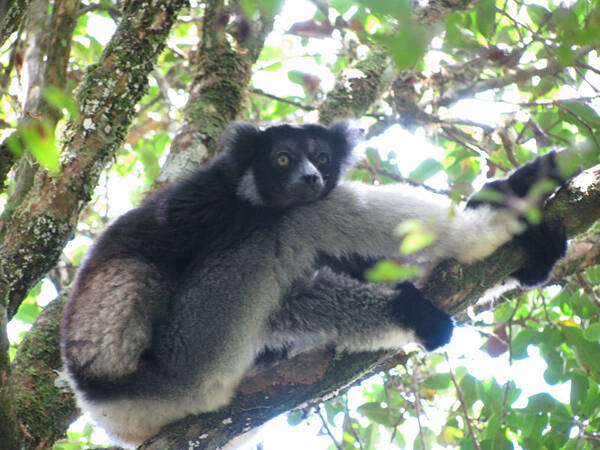Indri indri
IUCN
LCBasic Information
Scientific classification
- name:Indri indri
- Scientific Name:Indri indri,Prolemur
- Outline:Primates
- Family:Lemuridae
Vital signs
- length:30-71.2cm
- Weight:1-7kg
- lifetime:About 9 years
Feature
It is the largest group of existing prosimian monkeys.
Distribution and Habitat
The giant lemur is found only in Madagascar and lives in mountain and coastal rainforests.
Appearance
The largest group of existing prosimians. The giant lemur is 30 to 71.2 cm long and weighs 1 to 7 kg. It has a pair of nipples on its chest. Its body is densely covered with fine and smooth hair, with a wide range of colors. Its face is very short and its snout is short and wide. Its legs are much longer than its arms. Its hands are narrow and long, equivalent to 6 times the width of the hand. Its thumb is short and can be slightly opposite to the other fingers. Its feet and toes are very long, like huge claws. There are 3 genera and 4 species in this family, all of which are endemic to Madagascar. Most of them live in dense tropical jungles or arid areas. There are only 2 species of the genus Protosaurus and 1 species each of the genus Velociraptor and the genus Stumpy-tailed Lemur. The giant lemur is white, light gray, gray or brown. Some have orange-red patches on their shoulders and limbs, some have white limbs, or black on their heads, ears and arms, and a triangular patch on thei
Details
The giant lemur (scientific name Indri indri) is the only species in the giant lemur genus.

The giant lemur is mainly arboreal, but also active on the ground. Most of them live in dense tropical jungles or arid areas; they are active during the day or at night. They feed on leaves, flowers, bark and fruits. They live in small groups, with a maximum of 9 in each group. The gestation period is 4 to 5 months, and the offspring is born in June to July (August in arid areas), with one offspring per litter. The offspring can live independently after 45 days. Males reach sexual maturity at 2.5 years old. Some of their calls are like hens, while others are like dogs. They are good at jumping between trees, and can jump up to 10 meters at a time. When jumping, their bodies are perpendicular to the ground. They sleep sitting up, with their arms hugging the tree trunk, their heads between their knees, and their tails hanging down and curled up like clockwork. The gestation period is 5 months, and the offspring are born in May or June, with one offspring per litter.
The giant lemur is monogamous. Females reproduce once every 2-3 years. The breeding season is usually from May to June, with a gestation period of 120-150 days. They give birth to one offspring per litter. The offspring can live independently after they are 2 years old, and they reach sexual maturity between 7 and 9 years old. The mortality rate of young monkeys is very high, and more than 50% of the great lemurs do not live to reproduce.
The IUCN Red List lists them as endangered (EN).
Protect wild animals and eliminate game.
Maintaining ecological balance is everyone's responsibility!








